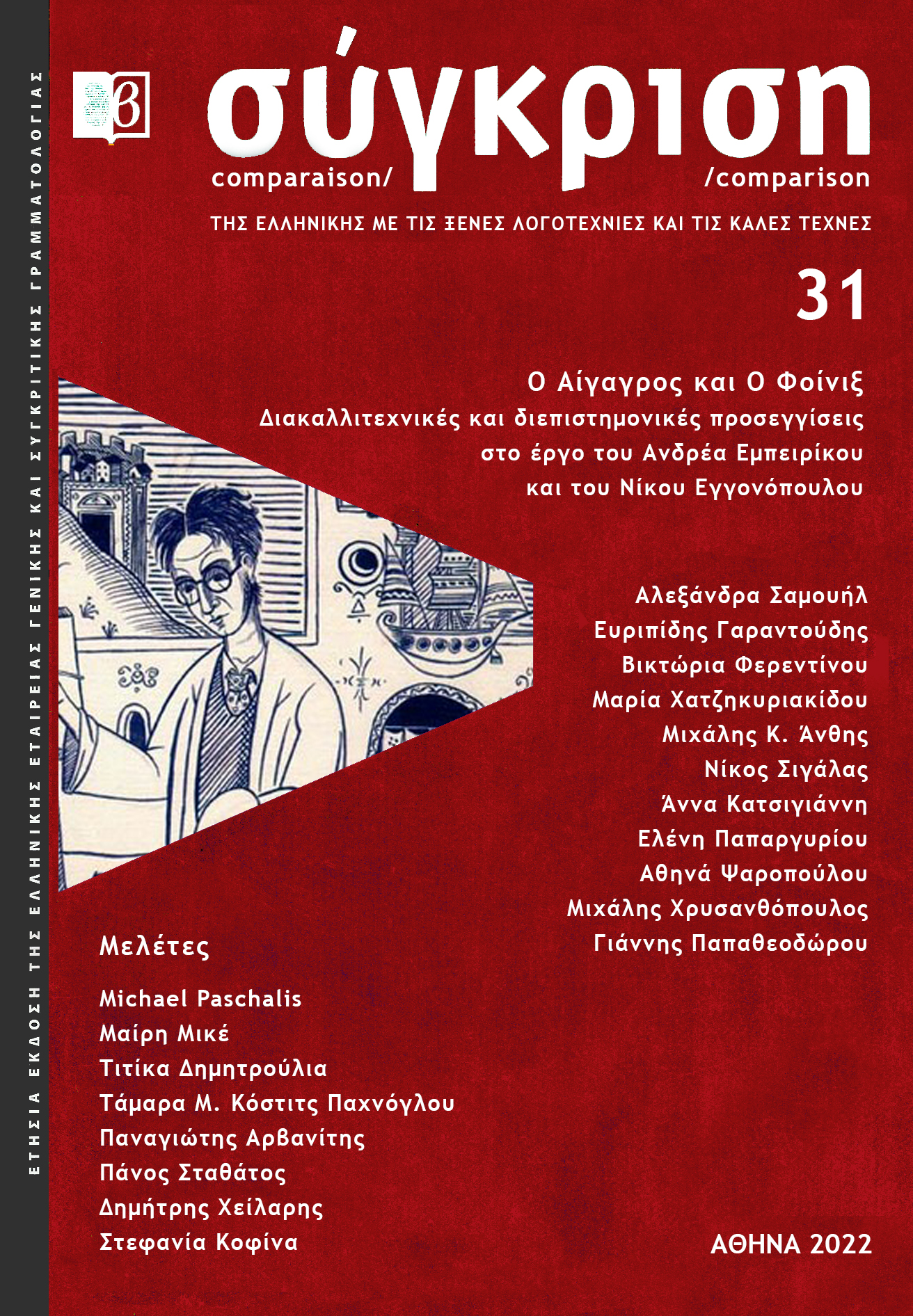ΜΙΧΑΛΗΣ Κ. ΑΝΘΗΣ, Κώδικες έμφυλης αναπαράστασης στο εικαστικό έργο του Νίκου Εγγονόπουλου. Διακειμενική προσέγγιση
Περίληψη
Decoding gender representations in some paintings of Nikos Engonopoulos. An intertextual approach
This paper approaches the narrative codes Nikos Engonopoulos used to present, in some of his paintings, the theme of gender representation with the conflicting extensions at an ideological and social level. His surrealist view is potentially a form of denouncement and subversion of dominant stereotypes and traditional meanings of the gender roles of his heroes or heroines. The paintings, which are selectively presented in this paper, reveal Engonopoulos's consistency towards the ethical, ideological, and social principles and ideals of surrealism as well as his sensitivity toward issues related to gender relations. A starting point originating from ancient Greek mythology that stimulates his imagination is the concept of metamorphosis which is dominant in Greek myths. From the cycle of Ovid's Metamorphoses, Engonopoulos selects two myths and creates his surrealistic narrative. The first painting is entitled “Io” (1942) and the second is “Nestor” (1958). Ηorned “Io” (Selene) in Engonopoulos's painting, through its Ovidian origins, incorporates amatory, social (gender violence), aesthetic and psychoanalytic symbolism. Engonopoulos also chooses and paints in the second painting the figure of Nestor mediated, however, by the poetic writing of Ovid. In reality, Eggonopoulos tells the story of Caeneus, originally a woman named Caenis, which has all the characteristics of paradox, and irrationality, and is the story of the transformation of a woman into a man. The visual narrative through which Engonopoulos deconstructs gender stereotypes is analyzed in two more of his works. The first bears the misleading title “Chalkis” (1955). In this painting, Engonopoulos depicts Lykophron, a poet from Chalkis but in reality, he is talking about his work entitled “Alexandra” (Kassandra), a poem with cryptic references. Based on relevant allusions to the latest Greek literature, the codes of gender representation are finally identified in Engonopoulos's work entitled “La fanciulla di Zante” (1952), which is a reference to the lyrical poem “He Pharmakomeni” by Dionysios Solomos. Conclusively, the paintings analyzed in this paper, in addition to the scope of Engonopoulos's reading literacy, also reveal his multi-layered visual discourse.
Λεπτομέρειες άρθρου
- Πώς να δημιουργήσετε Αναφορές
-
Άνθης Μ. Κ. (2022). ΜΙΧΑΛΗΣ Κ. ΑΝΘΗΣ, Κώδικες έμφυλης αναπαράστασης στο εικαστικό έργο του Νίκου Εγγονόπουλου. Διακειμενική προσέγγιση. Σύγκριση/Comparaison/Comparison, 31, 51–62. https://doi.org/10.12681/comparison.31273
- Τεύχος
- Τόμ. 31 (2022)
- Ενότητα
- Άρθρα

Αυτή η εργασία είναι αδειοδοτημένη υπό το CC Αναφορά Δημιουργού – Μη Εμπορική Χρήση – Παρόμοια Διανομή 4.0.
Οι συγγραφείς των άρθρων που δημοσιεύονται στο περιοδικό Σύγκριση διατηρούν τα δικαιώματα πνευματικής ιδιοκτησίας επί των άρθρων τους, δίνοντας στο περιοδικό το δικαίωμα της πρώτης δημοσίευσης. Άρθρα που δημοσιεύονται στο περιοδικό Σύγκριση διατίθενται με άδεια Creative Commons 4.0 και σύμφωνα με την άδεια μπορούν να χρησιμοποιούνται ελεύθερα, με αναφορά στο/στη συγγραφέα και στην πρώτη δημοσίευση για μη κερδοσκοπικούς σκοπούς και με δικαίωμα τροποποίησης μόνον με παρόμοια διανομή (αν αναμείξετε, τροποποιήσετε, ή δημιουργήσετε πάνω στο υλικό, πρέπει να διανείμετε τις δικές σας συνεισφορές υπό την ίδια άδεια όπως και το πρωτότυπο).



